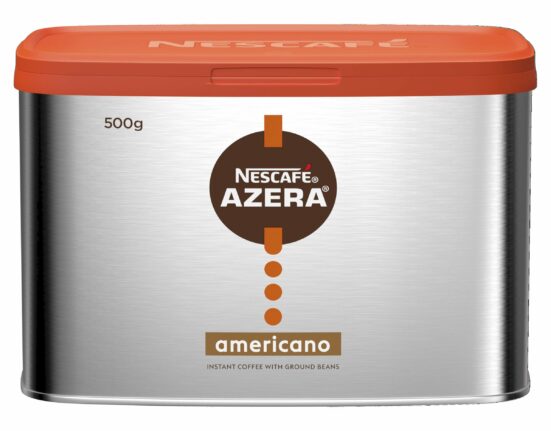In the world of kitchen appliances, coffee machines, particularly those equipped with espresso waste pipes, epitomize a burgeoning discourse around sustainability, efficiency, and the enhancement of culinary experiences. As coffee culture proliferates, the relationship between consumers and their coffee machines assumes newfound significance, sparking debates about environmental impact and the practicalities of daily use. This article endeavors to dissect the intricate dynamics surrounding espresso machines with waste pipes, an often-overlooked feature that presents an array of advantages and challenges.
Understanding the utility and operational mechanics of coffee machines with espresso waste pipes is imperative for both home brewers and coffee aficionados. The incorporation of a waste pipe allows for the efficient disposal of spent coffee grounds, addressing a subtle yet critical point within the environmental impact of household consumption.
This discourse prompts readers to reconsider their role within the coffee consumption cycle and invites them to ask: Are we cultivating a culture of sustainability in our daily routines? The following exploration will unfurl the ramifications of integrating espresso waste pipes in coffee machines, along with their broader implications for environmental stewardship.
Technological Advancements and Their Environmental Ramifications
The evolution of coffee machines, notably those equipped with efficient waste disposal systems, is a testament to human ingenuity. Traditional espresso machines require manual removal of the spent grounds, a practice that often results in waste accumulating in landfills. Conversely, machines featuring an integrated waste pipe system transport used grounds directly to a designated receptacle, minimizing human involvement and promoting a streamlined brewing experience.
This technological innovation not only enhances convenience but also contributes to a robust environmental ethos. Spent coffee grounds represent a biodegradable waste, and their direct disposal can facilitate composting initiatives, thereby enriching soil and reducing landfill burdens. In essence, these machines advocate for a circular approach to resource utilization, emphasizing the importance of recycling organic matter.
Moreover, the operational efficiency imparted by waste pipes can lead to a reduction in the energy consumed during the brewing process. By minimizing the need for manual waste disposal, users can focus on refining their barista skills, ultimately contributing to an elevated coffee experience. Thus, the question arises: Does your current coffee machine align with the ideals of sustainability and multivalent utility?
Culinary Implications: Beyond the Brew
Espresso machines with integrated waste pipes usher in a new domain of culinary possibilities. The ease of managing spent coffee grounds opens avenues for creative culinary exploits beyond the confines of typical coffee consumption. Composting spent grounds can invigorate garden soil, supporting sustainable agricultural practices; alternatively, they can be repurposed as natural abrasive cleaners or as components in skincare products, capitalizing on their exfoliating properties.
Furthermore, the utilization of coffee grounds extends to the culinary arts. Innovative chefs harness the rich, robust flavor profiles of used grounds, incorporating them into marinades, rubs, or even as a unique ingredient in baked goods. The trend of zero-waste cooking, which advances the philosophy of maximizing the utility of all food components, gains traction through these practices. This aspect of the discourse underscores a pivotal query: Are we fully utilizing the byproducts of our consumption, or are we perpetuating a wasteful culture?
The incorporation of a waste pipe within espresso machines thus embodies a larger commitment to culinary exploration and sustainability. It is both an invitation and a challenge to embrace an ethos of resourcefulness, urging readers to rethink their culinary habits and embrace a holistic approach to consumption.
Challenges and Consumer Responsibilities
While espresso machines with waste pipes present exciting advantages, they are not devoid of complexities. The maintenance of such systems requires a proactive approach from consumers. Regular cleaning ensures that waste pipes function optimally and that issues such as clogs or undesirable odors are mitigated. This necessitates a paradigm shift: the responsibility of coffee preparation extends beyond mere brewing, urging users to engage with the full lifecycle of their appliances.
Moreover, the initial investment in innovative coffee machines can deter potential consumers. The market abounds with options that lack integrated waste systems, often appealing to the budget-conscious or the convenience-driven consumer. This reality poses a critical inquiry for potential buyers: Are we willing to invest in technology that not only transforms our coffee experience but also enhances our environmental footprint?
The confluence of these challenges and responsibilities elucidates the pressing need for consumer education and awareness. As environmental crises intensify, the onus lies with individuals to make informed decisions that reflect broader ecological considerations. The choice to invest in machines that prioritize sustainability is not merely a transaction; it is a commitment to effecting change both within one’s household and in the global coffee consumption landscape.
Future Directions in Espresso Machine Design
The trajectory of espresso machine design continues to evolve, marked by an increasing emphasis on sustainability and user-centric features. As the coffee industry grapples with pressing environmental challenges, innovation is likely to shape forthcoming iterations of coffee machines with waste pipes.
Developments such as energy-efficient brewing technologies and enhanced composting capabilities may emerge as focal points in new designs. Additionally, manufacturers may integrate educational components, enabling users to better understand and manage the lifecycle of coffee production and waste. The commitment to an eco-friendly approach may very well define the future of coffee technology, pushing consumers to expand their mindfulness beyond personal consumption.
This continual progression compels users to remain engaged in the conversation surrounding coffee culture and environmental responsibility. Ultimately, one question encapsulates this engagement: Are consumers ready to advocate for and adopt innovations that champion sustainability in their daily rituals?
In conclusion, espresso machines with waste pipes constitute a microcosm of the broader environmental discourse enveloping consumer technology today. They challenge us to consider our role in the cycle of consumption, urging us to adopt practices that extend well beyond our immediate gratification. By embracing these advancements, individuals can contribute to a harmonious relationship with the environment, transforming the act of brewing coffee into an opportunity for ecological stewardship.







Leave feedback about this